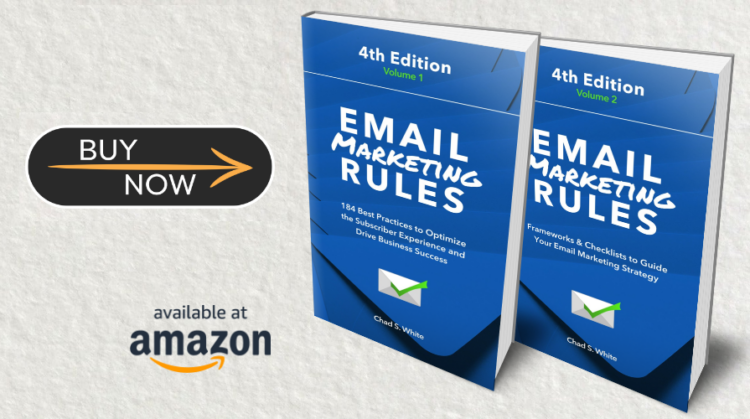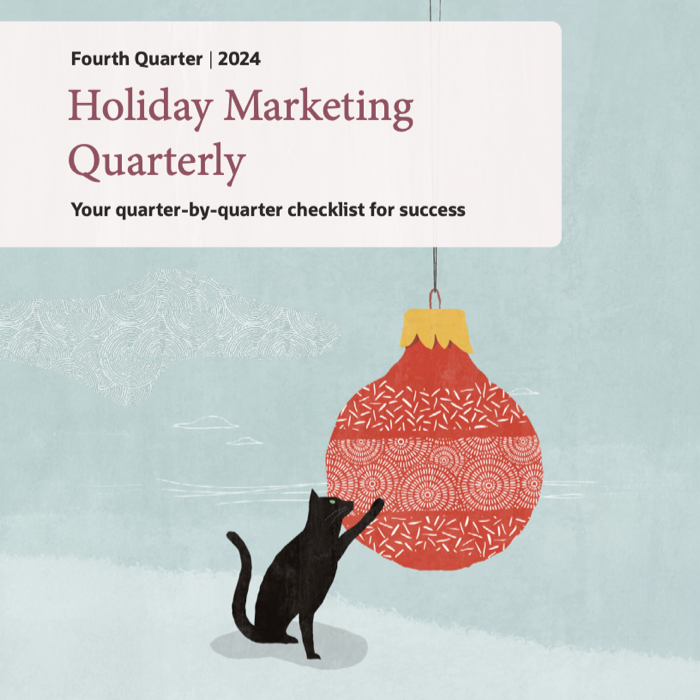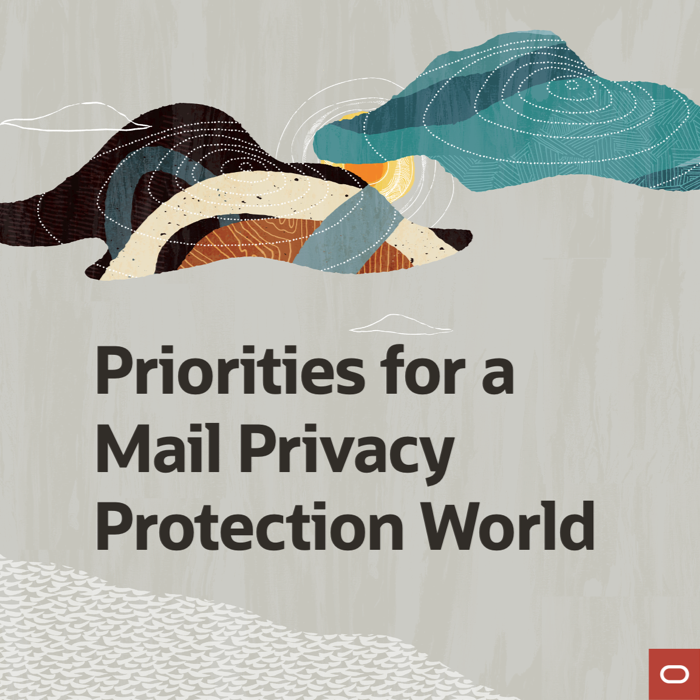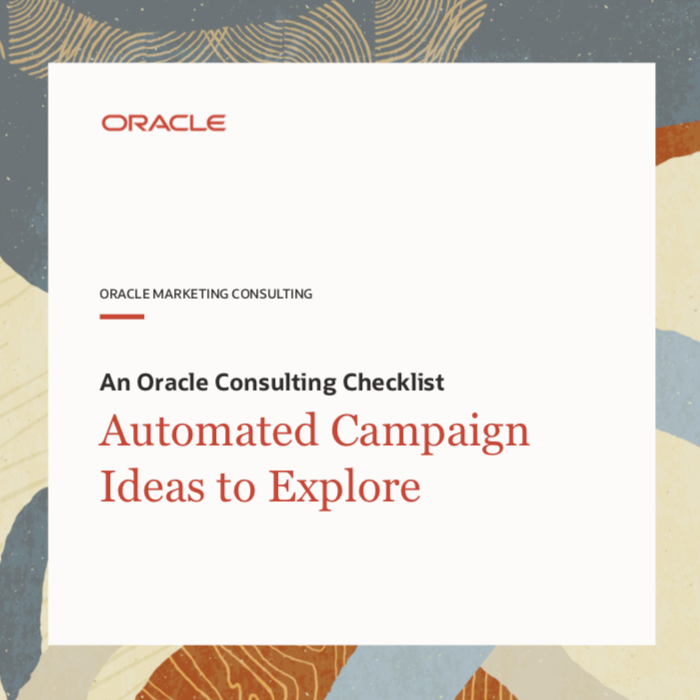Chief Marketer: Why GDPR Can Improve Your Email ROI
Posted on October 29, 2018

“GDPR is not the cataclysm everyone was expecting,” I told Beth Negus of Chief Marketer for this article.
60% of brands that are complying with GDPR saw their email lists shrink by less than 10%, according to a Litmus poll. And our whitepaper on email marketing’s ROI also found that brands operating in the more heavily regulated European Union have higher ROIs than US brands, which are primarily subject to the very lax CAN-SPAM law.
For the full conversation about why marketers shouldn’t be afraid of GDPR—or the California Consumer Privacy Act or any national legislation that’s spurred into existence by the CCPA—
>> Read the full article on ChiefMarketer.com
Email Interactivity: Opportunities and Challenges
Posted on October 26, 2018

Enthusiasm for email interactivity is at an all-time high. Marketers told Litmus that creating interactive email experiences was going to be the biggest design trend of 2018, and that’s a year after marketers declared that 2017 is the year of interactive email. Marketers are right to be excited.
Allowing subscribers to click in an email and activate additional content within that email reduces friction by not forcing them to visit a website or app. However, email’s disruptive evolution from static message to mailable microsite presents many challenges.
But first things first. Before we look at the challenges, let’s look at all the opportunities that interactive emails offer to marketers.
>> Read the full post on the Litmus blog
The Financial Brand: 6 Strategic Trends Reshaping the Future of Email Marketing in Banking
Posted on October 25, 2018

Email remains the workhorse of digital marketing. But how do companies in the banking industry create email campaigns that increase conversions, drive more traffic to your website, and generate more sales?
In this post, Bill Streeter, Editor at The Financial Brand, discusses six big email marketing trends, sharing insights from several email experts, including me. The top trends identified include:
- Maximizing Relevance Through Personalization
- Artificial Intelligence and Machine Learning
- Integrating Email Into an Omnichannel Marketing Strategy
- Leveraging Email for Onboarding & Cross-Selling ROI
- Focus on Conversions, Not Clicks and Open Rates
- Test Early and Often for Many Factors (But Not All at Once)
>> Read the full post on TheFinancialBrand.com
Webinar: ‘Taking Advantage of the Promise of Interactive Emails’ on Oct. 30
Posted on October 24, 2018

Email interactivity is the No. 1 email design trend of 2018, according to a Litmus poll. These advanced email coding techniques allow you to add functionality to your emails that was previously solely in the realm of websites.
In this webinar, EEC 2018 award-winners Alice Li and I discuss how marketers can take advantage of this new trend in email design and share inspiring examples. Reset your expectations for what’s possible in an email and understand how your brand can best use interactive emails. Key takeaways:
- Understand the adoption rates of interactive email elements
- Discover how email interactivity works
- See real-world examples of interactive emails
- Learn about how interactivity affects email metrics and the email interactions
Taking Advantage of the Promise of Interactive Emails
October 30, 2018
2pm EDT / 11am PDT / 6pm GMT
Your Presenters:
Alice Li
Sr. Email, Web Developer, Shutterstock
2018 eec Stefan Pollard Email Marketer of the Year Award winner
Chad S. White
Research Director, Litmus
2018 eec Email Marketer Thought Leader of the Year Award winner
>> Register for this free webinar
Webinar: ‘Live Optimization – Supercharge Your Welcome and Onboarding Emails’ on Oct. 30
Posted on October 23, 2018

A great first impression is often the first crucial step to building a long-lasting relationship. It’s no different in email marketing. When new prospects enter the top of your funnel through a newsletter signup, free trial offer, or asset download, how do you best introduce them to your brand, set expectations, and plant the seeds for relationships that last?
With this webinar, we’re bringing Live Optimization—one of the most popular sessions at Litmus Live—right to your desk. Join the Litmus team and onboarding email expert Val Geisler as we review welcome emails from your peers and provide hands-on A/B testing suggestions, design feedback, and strategic takeaways to help you maximize value, engagement, and response.
Live Optimization – Supercharge Your Welcome and Onboarding Emails
October 30, 2018
12pm EDT / 9am PDT / 4pm GMT
Your Presenters:
Val Geisler
Email Conversion Strategist at valgeisler.com
Chad S. White
Research Director, Litmus
Jason Rodriguez
Community & Product Evangelist, Litmus
Justine Jordan
VP of Marketing, Litmus
Can’t make it on Oct. 30? Don’t worry. Register and you’ll receive the recording of the webinar.
>> Register for the free webinar
NextAfter’s Generosity Freakshow Podcast: Optimizing Email with Chad White from Litmus
Posted on October 18, 2018
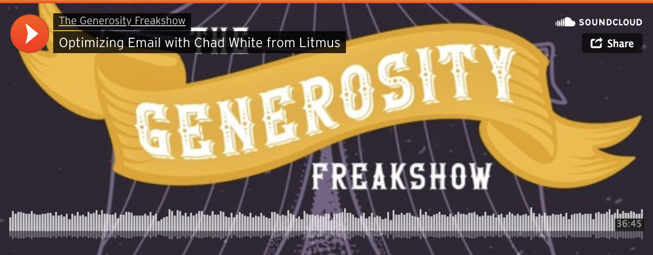
I recently joined Brady Josephson of NextAfter on The Generosity Freakshow Podcast to talk about email marketing and nonprofits. We talked about:
- Why I wrote Email Marketing Rules
- Where many brands go wrong with email marketing
- What’s changed with email marketing over the years
- How nonprofits’ email marketing programs differ from other industries’ programs
- My definition of “generosity”
- And more
>> Listen to The Generosity Freakshow Podcast
Infographic: Decision Tree for Recovering from Email Marketing Mistakes
Posted on October 17, 2018

Oh, no. You’ve just realized that you made a mistake with your latest email marketing campaign and the panic is starting to set in. What do you do next?
Take a deep breath and refer to this decision tree from our latest report, How to Recover from Email Marketing Mistakes. This decision tree will take you step-by-step through six questions that will help you decide how to recover from this mistake quickly and with as much grace as possible.
>> View the decision tree on the Litmus blog
The Last Word on September 2018
Posted on October 5, 2018
 A roundup of email marketing articles, posts, and tweets you might have missed last month…
A roundup of email marketing articles, posts, and tweets you might have missed last month…
Must-read articles, posts & reports
Adobe gets its company, snaring Marketo for $4.75 billion (TechCrunch)
Say Goodbye to Inbox by Gmail (TechCrunch)
Mark Ritson: We’re a very long way from declaring marketing a science (MarketingWeek)
This is why customers hate your emails (Smart Insights)
Insightful & entertaining tweets
“What can be automated should be automated because that allows you to focus on the customer” @NeetiShukla #MarTechConf pic.twitter.com/ZWmahC4iEm
— Ginny Marvin (@GinnyMarvin) October 2, 2018
“Just because you can, doesn’t mean you should.” It’s up to us to be stewards of responsible email marketing in our organization. Educate your stakeholders and bring data to the table. @laurenkremer #litmuslive
— Justine Jordan (@meladorri) September 18, 2018
Haha, LOVE calling the bottom of a (landing) page the “dripping pan” — to collect those who make it to the bottom of the page. Give ’em something to do next! Make an offer. via @ConversionSci #CMWorld
— Jessica Best (@bestofjess) September 5, 2018
Noteworthy subject lines
Levi’s, 9/24 – Register to vote. Make a difference.
J.Jill, 9/5 – When women come together to help women, it works.
Feeding America, 9/17 – Carolinas battered by Florence. Help now.
GapKids, 9/15 – Get ready for Halloween with these spooky styles
ThinkGeek, 9/25 – 25% off Easy Costumes gives you a head start on Halloween!
PepsiCo, 9/5 – NFL Party Boxes are here!
Lenovo, 9/11 – Introducing Smart Display with Google Assistant
Wine.com, 9/25 – Collector Alert: 98-100pt Wine List
Costco Wholesale, 9/26 – FREE White Glove Delivery on Select Patio Furniture! Plus, New Savings on iPads Start Today!
Lenovo, 9/26 – Who likes to wait? Shop Quick Ship laptops for same day shipping!
REI, 9/20 – More Puff, Less Fluff
Saks Fifth Avenue, 9/1 – Knit-picking: 3 looks we’re obsessed with
Nike, 9/11 – Trending: utilitarian style
Banana Republic, 9/13 – Vegan suede is in for fall
Crate & Barrel, 9/17 – Tabletop inspo: Mixed metallics.
ModCloth, 9/7 – Are you a layer lover?
Urban Outfitters, 9/6 – How many sneakers is too many sneakers?
Chipotle, 9/24 – The hardest ingredient to pronounce at Chipotle is…
The North Face, 9/8 – Walk a mile or twenty…
Saks Fifth Avenue, 9/8 – These will out-dress the other guests…
Monterey Bay Aquarium, 9/22 – Overload your inbox with sea otters!
Clinique, 9/8 – Why oily skin needs a moisturizer.
Pier 1, 9/13 – 3 ways to be the best host this fall!
Net-a-Porter, 9/30 – Try this new color power pairing
Jetsetter, 9/28 – 8 Bucket-List Trips in Europe That Will Change Your Life Forever
Williams Sonoma, 9/1 – INSTANT POT SALE + Delicious Recipes to Try!
Barneys New York, 9/7 – Fashion Horoschopes: Find Your Perfect Fall Outfit
RH, 9/30 – Introducing Our Fall 2018 Interiors Source Book
Victoria’s Secret, 9/17 – The Sexiest Show. The Sexiest City.
See’s Candies, 9/27 – Love candy? We’re hiring, join our sweet team!
New posts on EmailMarketingRules.com
Email Briefs: Why You Should Use Them and What to Include in Them
Report: How to Recover from Email Marketing Mistakes
The Rarest and Coolest Defensive Design Tactic: Email Pixel Art
Switching ESPs: What You Should Expect
Leadership Brief: Why a Lack of Email Marketing Mistakes Is a Red Flag
Infographic: 6 Ways Nonprofits Can Improve Their Email Creation Process
Posted on October 3, 2018

Nonprofits perform life-changing work, and email marketing is a key way for them to rally people to their cause, raise funds, and direct action. However, nonprofits’ operations are notoriously lean. That is definitely the case with their email marketing operations, according to the responses of more than 240 nonprofits who took Litmus’ 2018 State of Email Survey.
In this infographic, we highlight some of the unique challenges that the email teams at nonprofit organizations face. In collaboration with nonprofit research consultancy NextAfter, who promoted our survey to their community members, we also offer advice on six ways that nonprofits can improve their email programs.
 Email Marketing Rules
Email Marketing Rules



